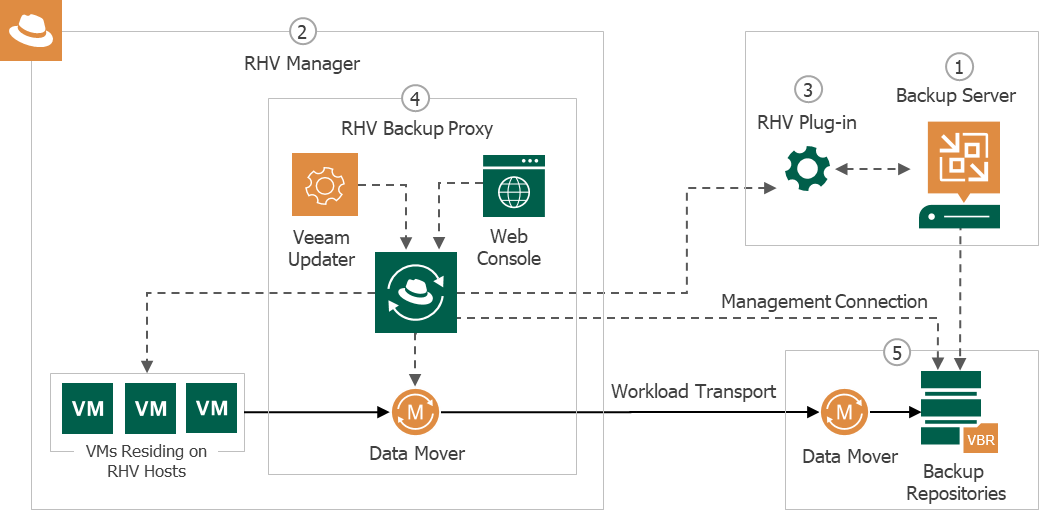 This is an archive version of the document. To get the most up-to-date information, see the current version.
This is an archive version of the document. To get the most up-to-date information, see the current version.Architecture Overview
The Veeam Backup for RHV infrastructure comprises the following set of components:
- Backup Server is a Windows-based physical or virtual machine on which Veeam Backup & Replication is installed. The backup server is the configuration, administration and management component of the backup infrastructure. It coordinates backup and restore operations, controls job scheduling and manages resource allocation.
- RHV Manager is a Linux-based physical or virtual machine that manages RHV resources such as VMs, hosts, clusters, storage domains and networks. Veeam Backup for RHV uses the RHV manager to access RHV resources while performing backup and restore operations.
- RHV Plug-in is an architecture component that enables integration between the backup server and the RHV manager. RHV Plug-in also allows the backup server to deploy and manage the RHV backup proxy.
- RHV Backup Proxy is an architecture component that sits logically between the backup server and other components of the backup infrastructure. While the backup server administers tasks, the backup proxy processes jobs and delivers backup traffic.
The RHV backup proxy is a Linux-based VM that resides on an RHV host and runs the following applications and services:
- Veeam RHV Backup Proxy Web Console is an interface that allows you to manage backup and restore operations, and to configure settings of the RHV backup proxy.
- Veeam Data Mover is a service that performs data processing tasks on behalf of Veeam Backup & Replication, such as retrieving source machine data, performing data deduplication and compression, and storing backed-up data in backup repositories.
- Veeam Updater is a service that is responsible for installing and scheduling updates for the RHV backup proxy.
- Backup Repository is an architecture component where Veeam Backup for RHV stores backup files. The backup repository also runs the Veeam Data Mover service that retrieves backed-up data from the RHV backup proxy.
